
【空间站】旧世界——罗晓冬个展
2016-09-22 13:50:55 未知
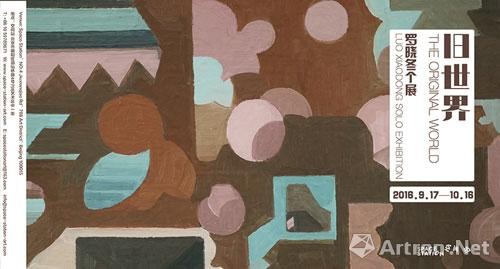
2016年9月17日空间站将为您带来艺术家罗晓冬的最新作品,这是他个人的第五个个展。本次取名为“旧世界”,将呈现艺术家近两三年来的关于绘画的思考与实践,显示其对现实与历史的一种新认知。“旧世界”——罗晓冬个展将持续至10月16日。
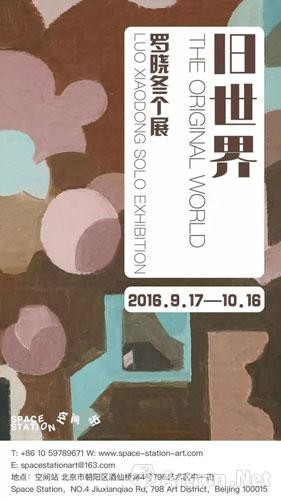
关于“旧世界”的新观察
文|李宏妹
图像信息的传播更新令人变得越发机械性,同时也悄然迅速地改变着人的观看方式。经过设计筛选的图像带有失真性,也早已脱离了最初时的目的——为了获得真实保存的时间和空间。人的视线在忙碌与移动中,总是将事物置于围绕它的事物链中,进而构造着呈现的面前者。然而关于新旧世界的问题并不是个罗晓冬的创作目的,“旧世界”绘画是在探寻一种“自在之物的世界”的真实。
回顾罗晓冬的已有绘画作品,像是经过了一个从“致语”到“转踏”的历程。从罗晓冬前期分阶段性的作品——“空城”、“潜溢”、“大象”、“反复”、“云史”、“外物”等,整体里可以识别出一个模糊的“旧世界”的背影。反复与循环形成了一个旋绕在作品上的轨迹,迂回中豁然生发出的通达显现在他的现阶段作品之中。大部分作品展示者希望观者也能够思量并理解其创作,晦涩戏弄、故作姿态仅能作为个体自足的缺口而难以保持时间潜在的作用力。之于兼杂着三重身份的罗晓冬,作为展示者的他充满了紧张与期待的多味,作为观者的他糅合了感性与理性的摩擦,作为绘画者的他则保持着对具象的敏感以及对存在的思考。因而观者也无需主动作为一个视觉猎人,可以在他的画作中切换身份进行潜意识地自由进退,共同守护着时间的有效性和空间的流动性。观者需要把握作品的真实意志,才能获得不谋而合的鲜活关系。
罗晓冬的“旧世界”绘画像由多个颜色、比例不一的形状锁镶嵌而成,而开启“旧世界”的关键密码则是新的观看方法。不在经验的设计内,形状的不确定性、色块的不确定性,往往隐匿着一种从屋顶开始造房的危险性。艺术家是赤裸的,他蜷缩着去寻找一块裹布,试探性地从可视内构筑再观。他从某一物象的边角开始汲取,继续抽离各物象的边廓进行水平垂直的增减,色块也随之游移碎片化,而颜料的涂抹覆盖量几乎成为了藏于画面中窥探其创作方法的几何棱镜。呈现于画面中的元素间本无关联,却无不产生着交叠的关系,这层关系并非刻意。元素被反复的提炼与加工,进而在画面中被规整与打散,新的内容便打破着原有能指内象的平衡。艺术家绕开固有的现代绘画的经验和技巧,不论是画笔还是油画刀,抑或是具形还是象形,安险中行进也不疑虑步调的缓急。
抽象画派切断了艺术模仿的古典观念之根,后印象画派之后的绘画则趋于被再现之物不可再辨,希望反图式地还原艺术家把握的直觉“本质”。当现代主义的“活动进入生命”显现程度不一时,绘画的题材、材料、手法、观念等等都在发挥能动性,观看方法也继而按“现象”进行梳理划分。如果把构图看作是图画的感情关键、影像激发起的感情,从生活体验转向冷漠的“艺术欣赏”层面,那么一切冲突消失殆尽后就只剩下万古不变的“人类处境”。罗晓冬的作品不能曲解为单纯地进行物件抽象化、结构简单化而来的形状拼合,单调的符号、规矩的比例分析在一定层面上曲解了问题的方向。“旧世界”绘画的线条、形体不被套入“读画”中且其并非主角,因此不能粗浅地归于抽象、立体、结构、极简主义等的混合量变。
计算机绘图工具能够做到精准的图片取色,正恰恰同是人的动作,绘画总是具有不可替代的神秘属性。从视觉感官的惯性出发去观看罗晓冬的绘画,画面整体的灰暗倾向会使观者被那种漫溢的深沉感、怀旧感所俘获。然而我们不能“天真”地用画面感去理解罗晓冬的“旧世界”绘画,色彩在他的画面中代替了时间的引力,它们互相碰撞、征服、调和后才能够通过空间的氧化呈现出本真。颜料时而是被动地框入锋利边缘内的厚涂,时而是主动地流出模糊边缘外的平抹。色彩时而是不同纯度、明度的大面积暗色对比,时而是不断搭配、调整的小面积亮色互补。安静的内象如此富于颜色变化并非有意为之,也非外在的还原、装饰和内在的流露、填充,而是他对物化的印象色、时间的观看色。
鲍里斯·格洛伊斯认为有无限多的可能性图像作为剩余物,因此无法对应到任何具体趣味上。一个个在时间变速与空间拉伸中的印象,被罗晓冬沿用新的观看方法重新植入到扁平中。自由形体在脱离了上下文关系后,变得陌生而荒诞。如剖面的人像偶发性地插入线性的时间与多维的空间中,纵横的指引与万向的错位瞬刹凝固了,距离在延伸的同时,却又制造了被重重包围的紧凑。
处于智化系统中,可控范围外的实用性被强调的同时又被可控范围内的思想拒绝推翻,这种争斗和挣脱就这样不停地产生着人的矛盾。而对一个矛盾来说,能够充分的解读就是充满矛盾的解读。“回归步伐”中人充当的身份就像是一个步履计算仪器,结果和脉动实现共时性的同时过程和状态却被淡化分离。那些生活、网络、报纸中的图像被罗晓冬从发生中剥离出来,片段在时间的切口补充着曾有的记忆,因此自由形体也具有了记录历史的功能。时间流逝与视觉经验是不可分割的,个体意识的增强即伴随着历史意识的不断增强,历史的碎片反映在罗晓冬的绘画上也就有了“旧即是新”的含义。
画面中的否定之否定,成为罗晓冬生成画面内象的一种手段,画面的最终完成在某些层面来说是一种“错误”的集合。约翰·伯格曾提到:“我们见到的与我们知道的,二者的关系从未被澄清。”在经验之外,搜集自觉度不高的事物里被分割和占据的片段重新建立画面秩序的合理和平衡无疑是困难的,尤其要在机缘的凑巧下等待画作浚决的时间里,他依旧固守着寻找真实的出发点。
生活中的罗晓冬是脾性细腻柔和的,他细致地观察着体肤之外的事物也记录着自己的身心变化。于他而言,现实生活是一个经过打磨的影子,而作品的语境也随之处于“隔”与“不隔”之间。当外物与信息处于加减速运动的诸多状态之中,罗晓冬则以一个旁观者的视角安静地审视着周遭,在画布的无尽空间里编织着一个摒弃了现实简单对应的整体视觉游戏。这是一种“理性形式的缩影”也是反复对“经验世界”的突破和重建。
展览作品
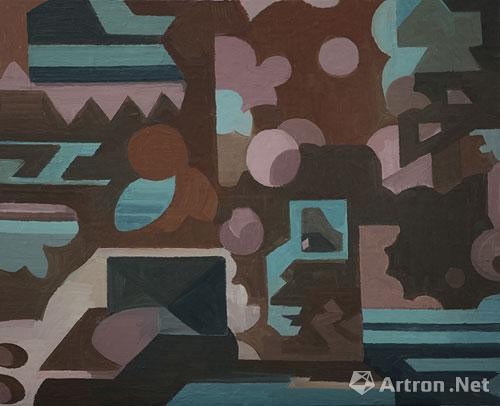
后沙峪,布面油画,100*80cm,2016
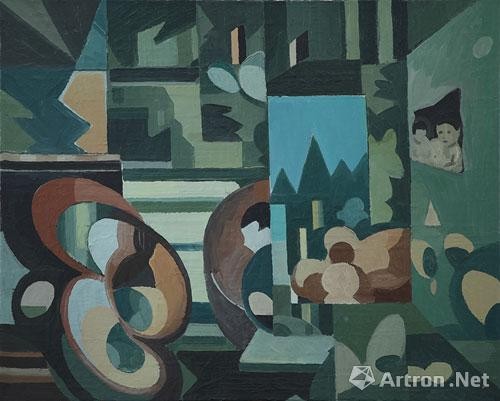
绿房间NO.1,布面油画,100*80cm,2016

剩余空间NO.1,布面油画,100*80cm,2016

剩余空间NO.3,布面油画,240*205cm,2015
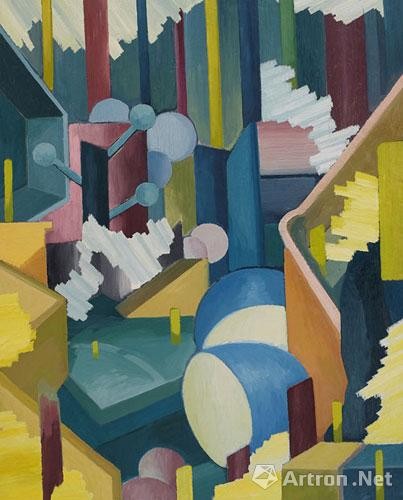
填充物,布面油画,80*100cm,2015
Space Station will bring you an exhibition of LUO Xiaodong's latest works on September 17. This exhibition by the name of "The Original World" will be the fifth solo exhibition of the artist. It will present his reflections and practices on painting for the last couples of years, showcasing a fresh insight into reality and history. "The Original World"-LUO Xiaodong Solo Exhibition will last till October 16.
New Observations About "The Original World"
LI Hongmei
Updated mass communication of visual information drove people increasingly mechanical and at the same time changed their methods of viewing before anyone notice. The images after deliberate design and selection are distorted and mark radical departure from the original purpose: to record the real time-and-space. People are too busy to concentrate. They put an object in a chain of potential connections, and then construct an image by overlaying reality and imagery. However, LUO Xiaodong's purpose is not to start a debate on the old or new world. Paintings from "The Original World" are in search of a kind of reality in "a world of the things-in-themselves".
LUO Xiaodong's paintings have gone through a progressive course from "opening address" to "Zhuanta(a kind of narrative art popular in Song Dynasty)". From the early works of artist, such as "Ghost Town", "Underneath Overflow", "Elephant", "Repetition", "History of Cloud", "External Objects", audiences can identify a vague back view of "The Original World". Repetition and cycling together formed an orbit above his works, and then a sudden enlightenment dawned on his current paintings. Most exhibitors want audiences to contemplate and comprehend their creations. Pedantry and posturing are acceptable for artists' self-amusement, but they cannot hold a long-term attraction. LUO has three identities: as an exhibitor, he is nervous while expecting; as a member of the audience, he has both sensibility and rationality; as a painter, he is sensitive to the figurative and keeps reflecting on existence. Therefore, an audience member needs not take the initiative as a visual hunter. He can change to another identity and move forward and backward subconsciously in LUO's paintings. He can be a co-guardian of the validity of time and the mobility of space. The audience member needs to grasp the gist of the work, in order to resonate with the artist.
LUO Xiaodong's "The Original World" series are composed of colorful, irregular shapes, therefore a new way of viewing can decipher them. To design uncertain shapes and color blocks beyond empirical experiences is as risky as building a house from the roof. The artist is "naked", crawling to find a fig leaf. He tentatively re-builds a second view on the reality that he can observe. He draws from the minutiae of objects, distorts the profile of them, changes the horizontal and vertical lines, breaks and moves color blocks. The amount of pigment applied on the painting almost become a hidden prism, through which the artist's creation methods can be examined. Elements in the picture are unrelated but overlapped without deliberation. Elements are extracted and processed over and over again, and then they are organized or scattered on the plane to create new content, breaking the balance of the existing innate image. The artist bypasses the existing experience and skills in modern painting. He will not question himself with any tools, be it painting brushes or palette knives, or be confused by forms, be it concrete or abstract.
Abstractionism cut off the classical notion of art-imitating-life. Objects portrayed in paintings after post-impressionism tend to be hardly recognizable. They are anti-form and reveal the "essence" grasped by artists' intuition. When modernism showcases various degree of "motion into life", themes, materials, techniques, ideas and other things related to paintings all start to play dynamic roles, and then methods of viewing are classified according to "phenomenon". If the composition of a picture is seen as the emotion key, which turned from sentiments about life to dispassionate "art appreciation", then all conflicts will boil down to the eternal theme: "human condition." LUO's artworks cannot be misinterpreted as merely patchworks of abstract objects or simplified structures. Monotonous symbols and regular proportion to some degree deviate the interpretations. Lines and shapes in "The Original World" series are not protagonists and they should not be brought into the "interpretation of paintings", and thus Luo's paintings cannot be attributed to hotchpotches of abstractionism, cubism, structuralism and minimalism.
Computer drawing tools can pick accurate colors from pictures, but it is exactly the irreplaceable human hands that makes paintings so unique and mystical. If people rely on their visual instinct to appreciate LUO's paintings, they may be overwhelmed by the heaviness and nostalgia brought by the overall gloomy tendency. That is why we cannot decipher his "The Original World" series by mere intuition. In his paintings, the gravity of time is replaced by colors, which collide, fight, reconcile and are "oxidized" by the space before the original state appear. Sometimes pigments are passively trapped in the sharp edges of rough layers of paint, at other times they actively flow out of the blurring edge of a flat cube of color. Sometimes large areas of dark colors with changes of clarity and lightness offer contrast, at other times small blocks of light colors complement any others through matching and adjusting. Innate images in pictures are full of color changes, but this is not an intentional design. The artist does not use colors to depict nor beautify the realistic external objects, nor to confide his own emotions, nor to fill a void in life. These colors are his impressions on external objects and his observations on passage of time.
Boris Groys believes that there is always an infinite surplus of possible images that do not correspond to any specific taste. Impressions that are shifting along time and stretching in space are implanted into two dimensional images by LUO with a new method of viewing. Free forms become strange and absurd when they are out of the context. The moment a portrait in profile is accidentally inserted into linear time and multi-dimensional space, its coordinate axis is instantly frozen. While the distance is extending, the whole thing is tightly encircled.
In an intelligence system, uncontrollable practicability is emphasized and at the same time rejected/overthrown by controllable rationality. This fight and struggle between them constantly produce contradictions. For a contradiction, a valid interpretation is a paradoxical one. Human being is more like a pedometer in "der schritt zuruck (the returning pace)". He/she synchronizes with the reality while human condition is detached from the history. Images from life, the Internet and newspapers are dissociated from their original places by LUO Xiaodong. They are segments containing memories from a length of time, which means free form has a function of recording history. The passage of time and the visual experience are indivisible. Individual awareness is strengthened as a growing historical consciousness, so the fragments of history reflected in the artist's paintings imply that "the old is new".
The negation of negation in LUO's paintings becomes a means of generating innate images. The finished paintings are, to some extent, collections of "mistakes". As John Berger said: "The relation between what we see and what we know is never settled." It is undoubtedly difficult to collect occupied fragments from "unconscious things" beyond empirical experiences and re-establish a rational and balanced order in the painting. It is especially so when he insists on finding the real motive while waiting for the right time to finish.
LUO Xiaodong has a pleasant and gentle personality in life. He carefully observes the external objects as well as records his own physical and emotional changes. In his view, the reality is a polished shadow, therefore the context of his works is often between "isolation" and "connection". When external objects and information are in multiple states of accelerating or decelerating, LUO will quietly observe the surroundings from a bystander's perspective and weaves on his "boundless" canvas a whole visual game which abandons the correspondence to the reality. They are not only "miniatures of the rational form", but also repeated breakthroughs and reconstructions on the "world of experiences".
展览现场

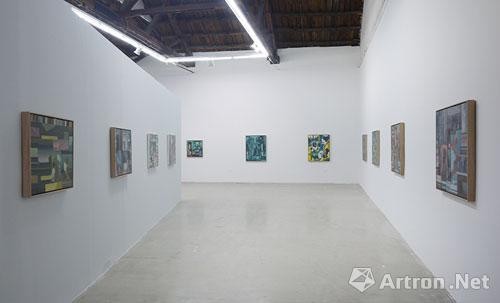







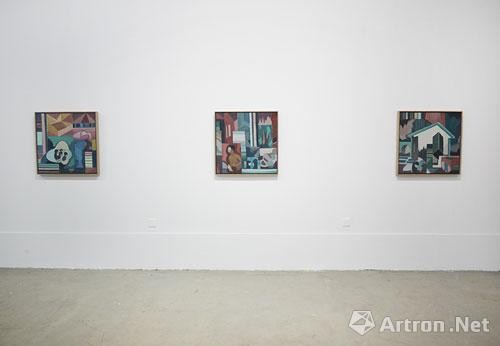


罗晓冬
1979年出生;2003年毕业于西安美术学院油画系;现居北京。
展览
个展
2012年
“反复”天仁合艺艺术中心,杭州
2009年
“潜溢”艾可画廊,上海
2008年
“空城计”上海证大现代艺术馆,上海
2007年
“我的世界”ZEIT-FOTO SALON,东京
群展
2016年
“艺术于我而言”西安OCAT艺术中心西安
2014年
“融——汇”天仁合艺美术馆,杭州
“滤境”北京季节画廊,北京
“自由的维度”新艺经纽约空间,纽约
2013年
“你在想什么?”季节画廊,北京-新加坡
“现实或者主义”南京金鹰当代艺术空间,南京
“你说什么呢”河北当代艺术文献库,石家庄
“天泉山房——中国新绘画收藏展”天仁合艺艺术中心,杭州
2011年
“归去来兮——云的历史”上湖流动美术馆,北京
“空间的零度”艾可画廊,上海
“草叶集”上海浦东国际机场当代艺术展览系列,上海
2010年
“对话”GALLERIA DELL‘ARCO巴勒莫,意大利
2009年
“诗意 日常”中国青年艺术家,艺术北京2009专题展——艺术突破,北京
“日中当代艺术21世纪的未来”枥木县立美术馆,日本
“质感的趣味”南京圣划艺术馆,南京
“未来制造”南京青和当代美术馆,南京
台北国际艺术博览会2009,台北
2008年
“刷新——澳门上海当代青年艺术家交流展”澳门艺术博物馆,澳门
“中日当代艺术——ZEIT-FOTO藏品展”上海美术馆,上海
“丸之内的中国梦——中国当代艺术展”丸之内,东京
2007年
“后风景”南京圣划艺术馆,南京
2006年
“谈话十+十”证大九间堂别墅,上海
“遭喻现实”重庆美术馆,重庆
“自我造局——2005中国当代绘画展”证大现代艺术馆,上海
2005年
“玖佰贰拾公斤”上海多伦现代美术馆,上海
“视觉惊艳”刘海粟美术馆,上海
2004年
“自动购物机器”苏州工艺美院,苏州
“下一站”圣划艺术馆,南京
公共收藏:
上海喜玛拉雅美术馆
上海美术馆
澳门当代艺术博物馆
南京青和当代美术馆
日本枥木县立美术馆
私人收藏:
日本
意大利
美国
新加坡等国际私人收藏家
Luo Xiaodong
1979 Born in xianyang.shanxi Province.China
2003 Graduated from the Oil painting Department of the Xi'an Academy of Fine Arts.China
Now Living And Working In BeiJing .China
Solo exhibition:
2012
"Duplication"Tianrenheyi Arts Center.Hangzhou,China
2009
"A Move Within" Galleria Dell'Arco,.Shanghai,China
2008
"The Empty City Trick" Zendai Museum of Modern Art.Shanghai.China
2007
"My World" Zeit-Foto salon,Tokyo,Japan
Group Exhibitions:
2014
"The Dimension of Freedom" New Art Group Space,New York
"Fusion Conve Rgence" T Museum,Hangzhou
"Filter" Art Seasons Gallery, Beijing
2013
"What are you thinking"Art Seasons Gallery,Beijing
"Realorism"Golden Eagle Contemporary Art center,Nanjing
"What are you talking about" ,Hcaa-Hebei Contemporary Art Archive, Shijiazhuang
"Tian Quan Shan Fang-The collection of contemporary art"Tian Ren He Yi Art Center, Hangzhou
2011
"0° Space " Galleria Dell'Arco,.Shanghai,China
2012
"Go and Come-The history of cloud"Shanghu movement museum.Beijing.
"leaves of grass "Art project of Shanghai Pudong International Airport,Shanghai
2010
Art Beijing 2010. Beijing.China
"Dialogues:Francesco De Grandi-Luo xiaodong" GALLERIA DELL'ARCO.Palermo,Italy
2009
"Refresh:Poetic&Daily"Chinese Young Artists
Art Beijing 2009 Thematic Exhibition- Art Unforbidden.Beijing.China
"The Insterest of Texture" Shenghua Arts Center.Nanjing.China
"Art Of The Future" Nanjing Qinghe Current Art Center.Nanjing.China
Art Taipei 2009.Taipei.China
2008
"Refresh:Contemporary Art of Emerging Macao and Shanghai Artists"
Macao Museum of Art.Macao.China
"Chinese and Japanese Contemporary Paintings-Zeit-Foto Collection"
Shanghai Art Museum.Shanghai.China
"Chinese Dream in Marunouchi-Chinese Contemporary Art Exhibition"
Marunouchi Building,Tokyo.Japan
2007
"Post-Landscape"Nanjing Shenghua Arts Center.Nanjing.China
2006
"Conversation 10+10" Zendai Museum of Modern Art.Shanghai.China
"Metaphors for reality" Chongqing Art Museum,Chongqing.China
"The Self-made Generation: A Retrospective of New Chinese Painting 2005"
Shanghai Zendai Museum of Modern Art.Shanghai.China
2005
"920 Kilograms" ShanghaiDuolunMuseum of Modern Art.Shanghai.China
"Vision express" Liu Haisu Art Museum.Shanghai.China
2004
"Automatic Shopping Machine" Suzhou Art & Design Technology Institute.Suzhou.China
"Next Station" Shenghua Arts Center.Nanjing.China
Public Collection:
Shanghai Himalayas Museum
Shanghai Art Museum
Macao Art Museum
Nanjing Qinghe Current Art Center
Tochigi Prefectural Museum
Private Collection:
Japan
Italy
America
Singapore International Private Collectors
(责任编辑:张媛)
注:本站上发表的所有内容,均为原作者的观点,不代表雅昌艺术网的立场,也不代表雅昌艺术网的价值判断。
 张瀚文:以物质媒介具象化精神世界
张瀚文:以物质媒介具象化精神世界 吕晓:北京画院两个中心十年 跨学科带来齐白石研究新突破
吕晓:北京画院两个中心十年 跨学科带来齐白石研究新突破 翟莫梵:绘画少年的广阔天空
翟莫梵:绘画少年的广阔天空 “纤维”提问2022:存在何“缓”?
“纤维”提问2022:存在何“缓”?
全部评论 (0)